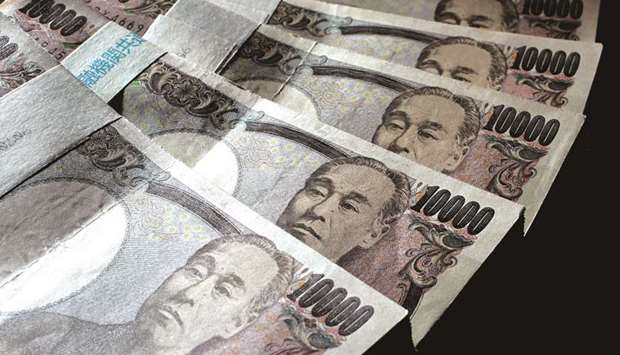The yen’s stealth rally towards the key 100 level is getting noticed, and that will probably bring on a flood of resistance.
That’s the view of many analysts in Tokyo, who see a combination of reduced repatriation flows and dollar demand from local investors pointing to less pressure on the pair, even if risk aversion picks up. A look at seasonal factors and hedge fund positioning supports their calls.
The yen strengthened about 2% in July and the pair traded below the 105 per dollar level last week, a zone that has acted as a floor for about four years, save for a few small dips and a brief plunge in March at the height of coronavirus fears.
“The dollar may dip below ¥105 temporarily but a drop below 100 is unlikely,” said Takahiro Sekido, chief Japan strategist and head of global yen strategy at MUFG Bank Ltd. “The biggest change is in the balance structure of companies, where they have globalized their business portfolio which reduces repatriation needs and flows.”
With the decline in the dollar stealing the headlines, the yen has been tiptoeing toward a test of the psychological 100 level. Still, the rally in the Japanese currency has lagged gains seen in all but one of its Group-of-10 peers, suggesting little in the move was due to a shift in investor expectations for the yen.
The yen remains a haven when investor risk aversion intensifies. But unlike in the past, structural changes in the portfolios of Japanese corporate and institutional investors have reduced its upside vulnerability over the last several years.
Overseas direct investments from Japanese companies reached ¥20tn ($192bn) last year, more than double the figure seen in 2012, according to Ministry of Finance data. Loans to overseas units have made up much of the direct investment abroad this year, reflecting a commitment to foreign assets that can’t be easily cashed out and repatriated, according to Sekido.
Meanwhile, Japan’s big insurers and pension funds, which have plowed money abroad to escape near-zero yields on benchmark securities at home, have typically hedged their positions.
And comments from investors suggest they will step in to buy the dollar on any move close to 100. “Japanese investors are eyeing the dollar-yen levels of March to take currency risks as the pair approaches the lower half of the 100-105 range,” said Akio Kato, general manager of strategic research and investment at Mitsubishi UFJ Kokusai Asset Management. “The closer to the March lows the more likelihood their incentive to buy unhedged will heighten.” The pair fell to just above 101 per dollar on March 9.
Still, seasonality may help the yen, given the perception that the currency tends to rise toward mid-August when Japanese are off on Obon holidays, said SMBC Nikko Securities Inc strategist Makoto Noji in Tokyo.
One of the factors helping push the yen higher could be the seasonality of US coupon or dividend payments that are repatriated by Japanese investors, said MUFG’s Sekido. “Yen appreciation pressure will ease after this seasonal repatriation flows finish,” he added.
While the dollar-yen has retreated in August seven times out of the last 10 years, its average decline was just 0.4%, according to data compiled by Bloomberg.
Other levels of technical support for the dollar-yen also remain before 100 is hit. Osamu Takashima, chief FX strategist at Citigroup Global Markets Japan Inc, suggests one is just below 103.70. That’s a key so-called Fibonacci retracement level watched by technical traders, which stems from the pair’s spectacular more than 10% rebound from its March low.
Another technical support that may help hold the dollar-yen above 100 is hedge funds now modestly net long the Japanese currency.
While this signals bets the yen will rise, over the past decade it has been bearish wagers – large net-short yen positions – which have often exacerbated rallies in the currency, as fast money traders rushed to cover their losses.
Meanwhile, the closer the dollar-yen gets to the 100 level, the greater the pressure will build on Japanese authorities to do something, as was seen when the pair tumbled in March.

The yen remains a haven when investor risk aversion intensifies. But unlike in the past, structural changes in the portfolios of Japanese corporate and institutional investors have reduced its upside vulnerability over the last several years


